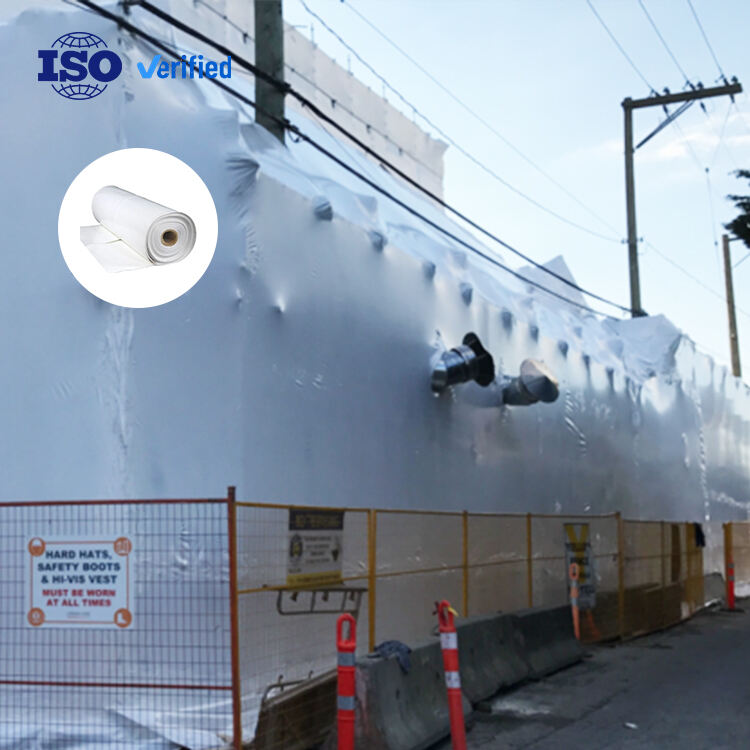Understanding the 2025 Shrink Film Market Landscape
The shrink film market continues to evolve rapidly as we move into 2025, with pricing dynamics reflecting both industry innovations and global supply chain developments. Manufacturers and distributors are adapting their pricing strategies to accommodate increased demand for sustainable options while managing production costs. This comprehensive guide will help you navigate current shrink film price trends and make informed purchasing decisions for your business.
Key Factors Influencing Shrink Film Pricing
Raw Material Cost Fluctuations
The base cost of shrink film continues to be heavily influenced by resin prices, particularly polyethylene and polypropylene. In early 2025, we're seeing moderate stability in petroleum-based raw materials, though market analysts predict potential volatility in the latter half of the year. This directly impacts the shrink film price structure, as material costs typically represent 60-70% of the total manufacturing expense.
Additionally, manufacturers investing in bio-based and recycled content options are experiencing varying cost pressures. While virgin resin prices have shown some stability, recycled content materials are commanding premium prices due to high demand and limited supply channels.
Production Scale Economics
Manufacturing efficiency continues to play a crucial role in determining shrink film prices. Larger production runs typically result in lower per-unit costs, allowing manufacturers to offer more competitive pricing for bulk orders. Modern production facilities utilizing advanced extrusion technology and automated quality control systems can maintain tighter tolerances while reducing waste, ultimately affecting the final shrink film price point.
Recent technological upgrades across major manufacturing facilities have led to improved production yields, though these investments are partially reflected in current pricing structures. The industry is seeing a gradual return on these investments through reduced operational costs.
Current Market Prices and Packaging Formats
Standard Gauge Options
The shrink film price range for standard gauge options (60-75 gauge) typically falls between $85-$120 per roll for standard sizes, with variation based on quantity and specifications. Premium grades designed for high-speed packaging lines or specialized applications command prices ranging from $130-$175 per roll. These prices reflect standard market rates for orders between 1-5 pallets.
Multi-layer films, offering enhanced strength and optical properties, generally carry a 15-25% premium over standard versions. However, their superior performance often justifies the investment through reduced material usage and improved package integrity.
Custom and Specialty Films
Custom gauge and specialty shrink films, including those with enhanced barrier properties or printed surfaces, typically range from $150-$250 per roll. The exact shrink film price depends on specifications, minimum order quantities, and any additional features such as UV protection or anti-fog properties.
High-performance films engineered for specific applications or extreme conditions may command premium prices up to $300 per roll, though these specialized products often deliver superior cost-effectiveness through reduced damage rates and improved throughput.

Understanding Bulk Purchase Economics
Volume Discount Structures
Bulk purchasing continues to offer significant advantages in 2025, with tiered pricing structures typically offering 10-15% savings for quarter-truckload orders and 20-25% for full truckload quantities. The shrink film price per roll can decrease substantially when ordering in larger quantities, though storage capacity and inventory carrying costs should be carefully considered.
Many suppliers are now offering flexible delivery programs that allow customers to lock in bulk pricing while taking staggered deliveries, helping to balance storage constraints with pricing advantages. These programs typically require minimum annual purchase commitments but provide predictable pricing throughout the year.
Contract Pricing Opportunities
Annual supply contracts can offer even more attractive pricing, with potential savings of 25-30% compared to spot market rates. These agreements often include price protection clauses and guaranteed supply allocations, providing valuable stability in volatile markets. The actual shrink film price reduction available through contracts depends on volume commitments, term length, and specific product requirements.
Some suppliers are introducing innovative pricing models that include shared-savings components based on packaging line efficiency improvements or waste reduction targets. These programs can provide additional value beyond pure price considerations.
Maximizing Value in Shrink Film Purchases
Total Cost Analysis
While the initial shrink film price is important, savvy buyers are increasingly focusing on total cost of ownership. Factors such as film yield (square feet per pound), packaging line efficiency, and damage rates all contribute to the actual cost per package. Premium films commanding higher prices may deliver better overall economics through improved performance.
Advanced analytics tools are now available to help quantify these factors, allowing for more informed purchasing decisions. Many suppliers offer cost analysis services to help customers optimize their film specifications and usage patterns.
Sustainability Considerations
Sustainable shrink film options, including those with recycled content or enhanced recyclability, typically carry a 10-20% premium over standard films. However, these products may offer advantages in terms of corporate sustainability goals and consumer preference. Some regions are introducing packaging taxes or incentives that can affect the total cost equation for different material choices.
The market for sustainable shrink films is expected to grow significantly through 2025, potentially leading to more competitive pricing as production scales increase and technology improves.
Frequently Asked Questions
What factors most influence shrink film pricing in 2025?
The primary factors affecting shrink film price include raw material costs, energy prices, production volumes, and specific product specifications. Market demand, technological advancements, and sustainability requirements also play significant roles in pricing dynamics.
How can I secure the best possible pricing for my shrink film needs?
To optimize shrink film costs, consider combining strategies such as bulk purchasing, annual contracts, and careful specification of film properties. Working with suppliers to analyze total cost of ownership and exploring vendor-managed inventory programs can also yield significant savings.
Are sustainable shrink film options worth the premium price?
The value of sustainable options depends on various factors including corporate sustainability goals, customer preferences, and potential regulatory requirements. While these films typically cost more initially, they may offer long-term advantages through improved brand perception and preparedness for future regulations.
How do gauge specifications affect pricing?
Film gauge directly impacts material usage and thus price, but thinner isn't always cheaper in terms of total cost. The optimal gauge depends on application requirements, packaging line capabilities, and product protection needs. Working with technical specialists can help determine the most cost-effective specification for specific applications.

